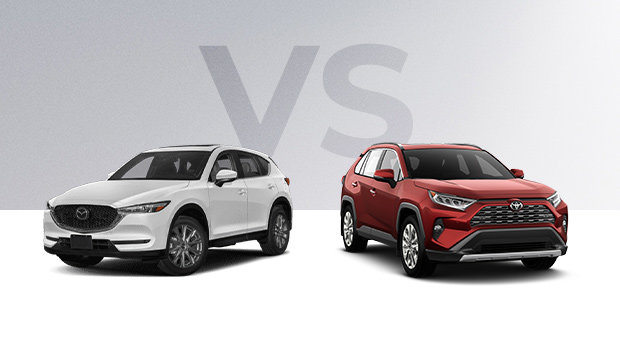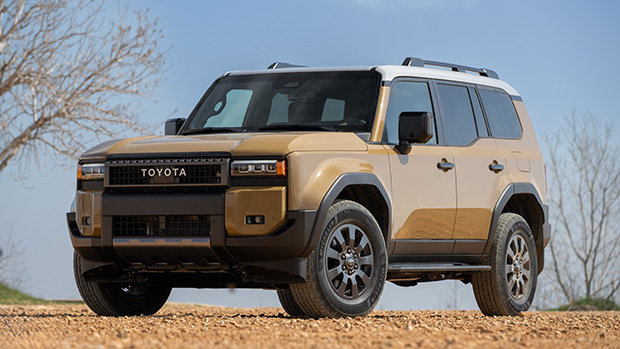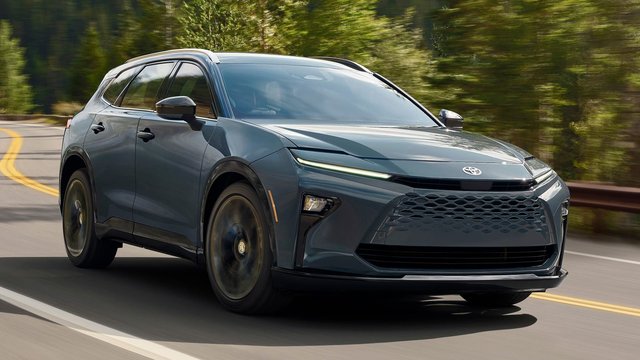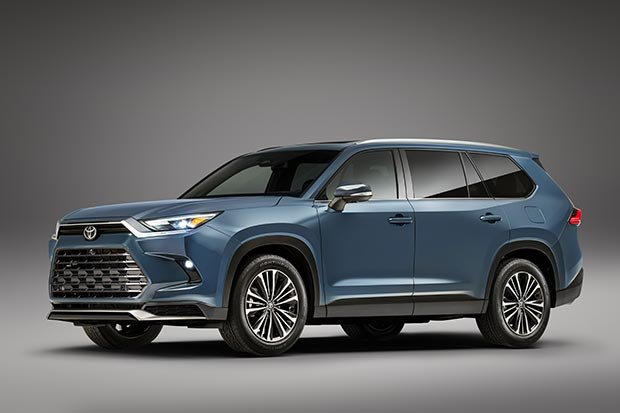For those still hesitating between the 2020 Mazda CX-5 and the 2020 Toyota RAV4, here's a quick look at the sensational qualities of Canada's best-selling Toyota SUV.
Both the Mazda CX-5 and the Toyota RAV4 are flagship products from their respective manufacturers, that's for sure. Nevertheless, for those looking for nothing less than the cream of the crop, you'll find the SUV of your dreams at your Spinelli Toyota dealership in Pointe-Claire, on Montreal's West Island, easily accessible from Highway 13 in Laval. Why should you choose the RAV4? There are many answers to this question, but here are a few.
On our roads since 1994, the Toyota SUV has been making happy owners ever since. The CX-5, on the other hand, is much newer since it was introduced in 2012. In this brief comparison, we'll see the main differences between these rivals, which may help you make a more informed choice.
Variety
The 2020 Toyota RAV4 offers no less than 10 models, and for this new vintage, it adds a TRD Off Road version that's more robust, sportier and better equipped to tackle the worst road conditions, in short, a steep trails and rough terrain pro. For just over $30,000 in its entry-range version, 2020’s best compact SUV, according to the experts at the Car Guide, will be yours. The 2020 CX-5 starts at just under $28,000 and offers 4 variants. Now, to make this comparison fairer, let's take a look at the respective entry-range versions of our competitors. So on one side, we have the 2020 RAV4 LE and on the other side, the 2020 Mazda CX-5 GX.
More powerful yet more frugal
It's probably thanks to the aluminum in the body that the RAV4 performs better than the CX-5 in terms of fuel economy, averaging 8.8/6.8/7.9 L/100 km as opposed to 9.7/7.8/8.8 L/100 km (city/highway/combined). You might think it's because the engine is less powerful. The RAV4's engine has 203 horsepower, while the CX-5's is rated at 187.
Roomier and more comfortable
More powerful, more energy efficient, and what else? It's also more spacious with its 1,064 litres of cargo capacity compared to the Mazda's 975 litres. The RAV4’s interior is also larger and therefore much more comfortable with more head and leg room. In short, more space for the passengers and their luggage.
Long live the hybrid
Another clear advantage in favour of the RAV4 is without a doubt the fact that it offers 4 hybrid models. These give you a ridiculously low fuel economy rating of 5.7/6.3 L/100 km (city/highway). The Mazda is not there yet. Under the hood is a 2.5-litre, 4-cylinder engine of 219 horsepower, a 1.6-kWh nickel-metal hydride battery, Toyota’s Hybrid Synergy Drive system and a CVT gearbox.
A host of commodities
Among the 2020 RAV4's countless features, you’ll find Apple CarPlay and Android Auto compatibility, a 7-inch or 8-inch touchscreen and the Toyota Safety Sense 2.0 technologies, such as Lane Departure Alert with Steering Assist and Road Edge Detection, Full Speed Range Dynamic Radar Cruise Control and the Pre-Collision Safety System with Pedestrian and Cyclist Detection.
Equipment galore
Standard on all trim levels are heated front seats, rear foldable 60/40 seats, air conditioning, Auto High Beams, a backup camera, Blind Spot Monitoring with Rear Cross Traffic Alert, keyless entry and so much more. The Mazda offers you some of these elements, however, what Mazda will never be able to offer you is quality, resale value and above all, Toyota's legendary reliability.
In a nutshell
It's true that the CX-5 has a nice personality, we have to give credit where credit is due, but you also have to admit that the RAV4 is particularly attractive since its redesign. Moreover, the numbers don't lie, and this compact SUV has seen its sales double in 5 years, and in 2017, it was the best-selling SUV in Canada, all categories combined.
In short, if you have about $30,000 to spend on your next SUV, drop by for a visit at Spinelli Toyota and discover the many faces of the RAV4, as stylish and comfortable as it is rugged and safe, and as roomy and fuel-efficient as it is capable of taking on any road conditions.





